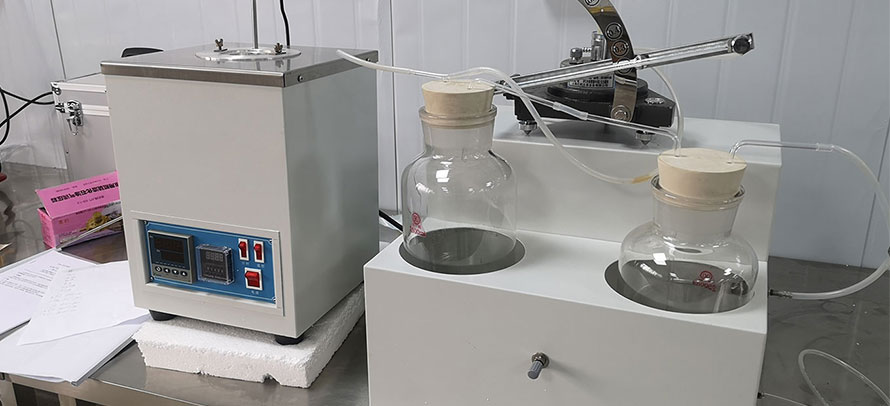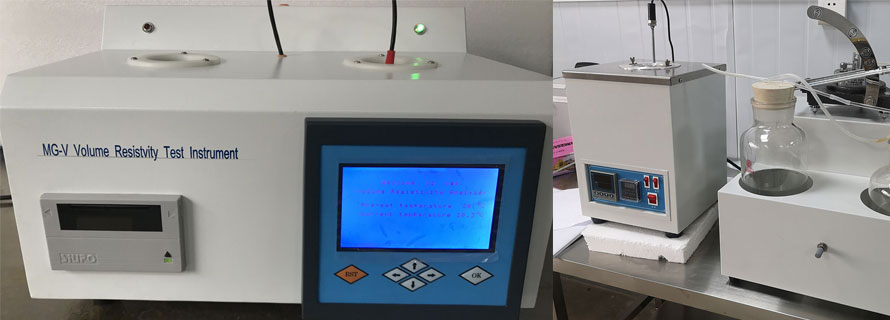ASTM D2505 for Ethylene, Other Hydrocarbons, and Carbon Dioxide in High-Purity Ethylene by Gas Chromatography
5. Apparatus
5.1 Any chromatographic instrument with an overall sensitivity sufficient to detect 2 ppmV or less of the compounds listed with a peak height of at least 2 mm without loss of resolution.
5.2 Detectors - Thermal Conductivity - If a methanation reactor is used, a flame ionization detector is also required. To determine carbon dioxide with a flame ionization detector, a methanation reactor must be inserted between the column and the detector and hydrogen added as a reduction gas (see Test Method D2504, Appendix X1, Preparation of Methanation Reactor).
5.3 Column - Any column or set of columns can be used that separates carbon dioxide, methane, acetylene and C3 and heavier compounds. There may be tailing of the ethylene peak but do not use any condition such that the depth of the valleys ahead of the trace peak is less than 50 % of the trace peak height.
5.4 Recorder - A recorder with a full-scale response of 2 s or less and a maximum rate of noise of +/-0.3 % of full scale.
5.5 Gas-Blending Apparatus - A typical gas-blending apparatus is shown in Fig. 2. A high-pressure manifold equipped with a gage capable of accurately measuring ethylene pressures up to 3.4 MN/m2 gage (500 psig) is required. Other types of gas-blending equipment, such as described in Practice D4051, can be used.
NOTE 1 - Practice E260 contains information that will be helpful to those using this method.
6. Reagents and Materials
6.1 Copper or Aluminum, or Stainless Steel Tubing, 6.4-mm (1/4-in.) outside diameter, and nylon tubing, 3.2-mm (1/8-in.) outside diameter.
6.2 Solid Supports - Crushed firebrick or calcined diatomaceous earth, such as Chromosorb P, 35 to 80-mesh and 80 to 100-mesh. Other supporting materials or mesh sieves can be satisfactory.
6.3 Active Solids - Activated carbon, 30 to 40-mesh, silica gel, 100 to 200-mesh. Other sizes may be satisfactory.
6.4 Liquid Phases - Hexamethylphosphoramide (HMPA), hexadecane. Squalene, silver nitrate, and β,β'-oxydipropionitrile. Other liquid phases may be satisfactory. (Warning - Combustible solvents. See A1.7.) (Warning - HMPA may be harmful if inhaled. Causes irritation. A potential carcinogen (lungs). See A1.5.)
6.5 Helium. (Warning - Compressed Gas, Hazardous Pressure. See A1.2.)
6.6 Hydrogen. (Warning - Flammable Gas, Hazardous Pressure. See A1.6.)
6.7 Acetone. (Warning - Extremely Flammable. See A1.1.)
6.8 Gases for Calibration - Pure or research grade carbon dioxide, methane, ethane, acetylene, ethylene, propane, and propylene. Certified calibration blends are commercially available from numerous sources and may be used. (Warning - Flammable Gases, Hazardous Pressure. See A1.2 and A1.3.)
6.9 Methanol. (Warning - Flammable. Vapor Harmful. See A1.4.)
NOTE 2 - The use of copper tubing is not recommended with samples containing acetylene as this could lead to the formation of potentially explosive copper acetylide.
7. Sampling
7.1 Samples should be supplied to the laboratory in high pressure sample cylinders, obtained using the procedures described in Practice F307, or similar methods.

